Erythropoiesis-stimulating agents for preventing acute kidney injury
- PMID: 39301879
- PMCID: PMC11413981
- DOI: 10.1002/14651858.CD014820.pub2
Erythropoiesis-stimulating agents for preventing acute kidney injury
Abstract
Background: Acute kidney injury (AKI) is characterised by a rapid decline in kidney function and is caused by a variety of clinical conditions. The incidence of AKI in hospitalised adults is high. In animal studies, erythropoiesis-stimulating agents (ESA) have been shown to act as a novel nephroprotective agent against ischaemic, toxic, and septic AKI by inhibiting apoptosis, promoting cell proliferation, and inducing antioxidant and anti-inflammatory responses. As a result, ESAs may reduce the incidence of AKI in humans. Randomised controlled trials (RCTs) have been conducted on the efficacy and safety of ESAs, but no prior systematic reviews exist that comprehensively examine ESAs with respect to AKI prevention, although the effectiveness of these agents has been examined for a range of other diseases and clinical situations.
Objectives: This review aimed to look at the benefits and harms of ESAs for preventing AKI in the context of any health condition.
Search methods: We searched the Cochrane Kidney and Transplant Register of Studies up to 30 August 2024 through contact with the Information Specialist using search terms relevant to this review. Studies in the Register are identified through searches of CENTRAL, MEDLINE, and EMBASE, conference proceedings, the International Clinical Trials Registry Platform (ICTRP) Search Portal and ClinicalTrials.gov.
Selection criteria: We included RCTs and quasi-RCTs (in which allocation to treatment was based on alternate assignment or order of medical records, admission dates, date of birth or other non-random methods) that compared ESAs with placebo or standard care in people at risk of AKI.
Data collection and analysis: Three authors independently extracted data and assessed the risk of bias for included studies. We used random-effects model meta-analyses to perform quantitative synthesis of the data. We used the I2 statistic to measure heterogeneity amongst the studies in each analysis. We indicated summary estimates as a risk ratio (RR) for dichotomous outcomes and mean difference (MD) for continuous outcomes with their 95% confidence interval (CI). We assessed the certainty of the evidence for each main outcome using the Grades of Recommendation, Assessment, Development, and Evaluation (GRADE) approach.
Main results: A total of 20 studies (36 records, 5348 participants) were included. The number of participants ranged from 10 to 1302, and most studies were carried out in single centres (13/20). All the included studies compared ESAs to placebo or usual care. Many of the studies were judged to have unclear or high risk of reporting bias, but were at low risk for other types of bias. ESAs, when compared to control interventions, probably makes little or no difference to the risk of AKI (18 studies, 5314 participants: RR 0.97, 95% CI 0.85 to 1.10; I² = 19%; moderate-certainty evidence), or death (18 studies, 5263 participants: RR 0.92, 95% CI 0.80 to 1.06; I² = 0%; moderate-certainty evidence), and may make little or no difference to the initiation of dialysis (14 studies, 2059 participants: RR 1.16, 95% CI 0.90 to 1.51; I² = 0%; low-certainty evidence). Even with standardised measurement of AKI, the studies showed no difference in results between different routes of administration (subcutaneous or intravenous), background diseases (cardiac surgeries, children or neonates, other adults at risk of AKI), or duration or dose of ESA. ESAs may make little or no difference to the risk of thrombosis when compared to control interventions (8 studies, 3484 participants: RR 0.92, 95% CI 0.68 to 1.24; I² = 0%). Similarly, ESAs may have little or no effect on kidney function measures and adverse events such as myocardial infarction, stroke or hypertension. However, this may be due to the low incidence of these adverse events.
Authors' conclusions: In patients at risk of AKI, ESAs probably do not reduce the risk of AKI or death and may not reduce the need for starting dialysis. Similarly, there may be no differences in kidney function measures and adverse events such as thrombosis, myocardial infarction, stroke or hypertension. There are currently two ongoing studies that have either not been completed or published, and it is unclear whether they will change the results. Caution should be exercised when using ESAs to prevent AKI.
Trial registration: ClinicalTrials.gov NCT03776851 NCT00676234 NCT02390102 NCT00999583 NCT00987454 NCT01364402 NCT00654992 NCT01066351 NCT01265680 NCT00476619.
Copyright © 2024 The Cochrane Collaboration. Published by John Wiley & Sons, Ltd.
Conflict of interest statement
TH: has a grant from JSPS KAKENHI Grant Number 19K03092.
TH: has a consultancy agreement with Kyowa Kirin and has received speaker honoraria from Kyowa Kirin, Astellas, Baxter, Terumo, and Torii Pharmaceutical for activities unrelated to this review.
HNoma reported personal fees from Kyowa Kirin outside the submitted work.
HNoma reported personal fees from Boehringer Ingelheim, Kyowa Kirin, ASKA Pharmaceutical, and Toyota Motor Corporation outside the submitted work.
HNishiwaki has a grant from JSPS KAKENHI Grant Number 18K10828.
HNishiwaki has received speaker honoraria from Kyowa Kirin, Baxter, Terumo, Ono Pharmaceutical Co., Ltd., Daiichi‐Sankyo and Kissei Pharmaceutical Co., Ltd. for activities unrelated to this review.
WL: is employed by the University of Otago, and has received research grants from the Health Research Council of New Zealand and Royal Society Te Aparangi for activities unrelated to this review.
TS received speaker honoraria from Kyowa Kirin.
Figures

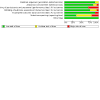




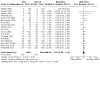


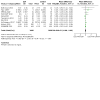
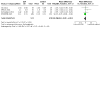





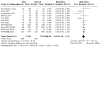
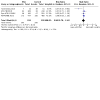
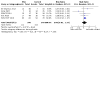









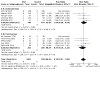

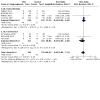

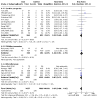


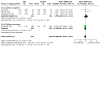

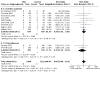
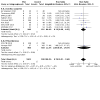





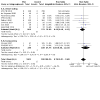





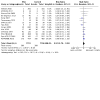
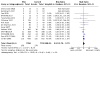



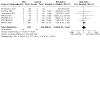
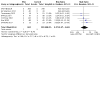

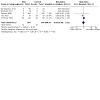




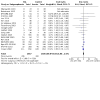
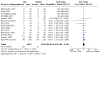

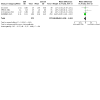
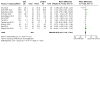



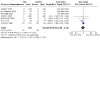
Update of
References
References to studies included in this review
Balestracci 2022 {published data only}
-
- Balestracci A, Capone MA, Meni Battaglia L, Toledo I, Martin SM, Beaudoin L, et al. Erythropoietin in children with hemolytic uremic syndrome: a pilot randomized controlled trial. Pediatriatric Nephrology 2022;37(10):2383-92. [PMID: ] - PubMed
Corwin 2002 {published data only}
-
- Corwin HL, Gettinger A, Pearl RG, Fink MP, Levy MM, Shapiro MJ, et al. Efficacy of recombinant human erythropoietin in critically ill patients: a randomized controlled trial. JAMA 2002;288(22):2827-35. [PMID: ] - PubMed
D'Ambra 1997 {published data only}
-
- D'Ambra MN, Gray RJ, Hillman R, Jones JW, Kim HC, Rawitscher R, et al. Effect of recombinant human erythropoietin on transfusion risk in coronary bypass patients. Annals of Thoracic Surgery 1997;64(6):1686-93. [PMID: ] - PubMed
de Seigneux 2012 {published data only}
-
- De Seigneux SM, Ponte B, Pugin J, Saudan P, Martin PF. Epoetin does not demonstrate anti-inflammatory properties after cardiac surgery [abstract no:TH-PO068]. Journal of the American Society of Nephrology 2010;21(Abstract Suppl):127.
-
- Saudan P, De Seigneux S, Ponte B, Sierra J, Weiss L, Pugin J, et al. Recombinant human erythropoietin in patients having cardiac surgery: does it prevent acute kidney injury? [abstract no: SA-PO2133]. Journal of the American Society of Nephrology 2009;20(Abstract Suppl):599A.
EARLYARF 2010 {published data only}
-
- Endre ZH, Pickering JW, Walker RJ, Devarajan P, Edelstein CL, Bonventre JV, et al. Improved performance of urinary biomarkers of acute kidney injury in the critically ill by stratification for injury duration and baseline renal function. Kidney International 2011;79(10):1119-30. [PMID: ] - PMC - PubMed
-
- Endre ZH, Ralib AM, Pickering JW, Major T, Goodkin DA, Palmer S. Acute high-dose intravenous epoetin does not increased blood pressure in critically III patients with acute kidney injury [abstract no: TH-PO801]. Journal of the American Society of Nephrology 2011;22(Abstract Suppl):296A. - PubMed
-
- Endre ZH, Walker RJ, Pickering JW, Shaw GM, Frampton CM, Henderson SJ, et al. Early intervention with erythropoietin does not affect the outcome of acute kidney injury (the EARLYARF trial). Kidney International 2010;77(11):1020-30. [PMID: ] - PubMed
-
- Ralib AM, Pickering JW, Major T, Palmer SC, Shaw GM, Goodkin DA, et al. High-dose intravenous epoetin does not increase blood pressure in critically ill patients with acute kidney injury. Clinical Nephrology 2013;79(5):370-9. [PMID: ] - PubMed
EPICURE 2017 {published data only}
-
- Urena M, Del Trigo M, Altisent OA, Campelo-Prada F, Regueiro A, DeLarochellière R et al. Combined erythropoietin and iron therapy for anaemic patients undergoing transcatheter aortic valve implantation: the EPICURE randomised clinical trial. EuroIntervention 2017;13(1):44-52. [PMID: ] - PubMed
Epo‐ACR‐02 2016 {published data only}
-
- Cariou A, Deye N, Vivien B, Richard O, Pichon N, Bourg A, et al. Early high-dose erythropoietin therapy after out-of-hospital cardiac arrest: a multicenter, randomized controlled trial. Journal of the American College of Cardiology 2016;68(1):40-9. [DOI: 10.1016/j.jacc.2016.04.040] [PMID: ] - DOI - PubMed
-
- Guillemet L, Jamme M, Bougouin W, Geri G, Deye N, Vivien B, et al. Effects of early high-dose erythropoietin on acute kidney injury following cardiac arrest: exploratory post hoc analyses from an open-label randomized trial. Clinical Kidney Journal 2020;13(3):413-20. [DOI: 10.1093/ckj/sfz068] [PMID: ] - DOI - PMC - PubMed
EPO‐TBI 2019 {published data only}12609000827235011‐005235‐22
-
- Presneill J, Little L, Nichol A, French C, Cooper DJ, Haddad S, et al. Statistical analysis plan for the erythropoietin in traumatic brain injury trial: a randomised controlled trial of erythropoietin versus placebo in moderate and severe traumatic brain injury. Trials [Electronic Resource] 2014;15:501. [PMID: ] - PMC - PubMed
-
- Skrifvars MB, Moore E, Mårtensson J, Bailey M, French C, Presneill J, et al. Erythropoietin in traumatic brain injury associated acute kidney injury: a randomized controlled trial. Acta Anaesthesiologica Scandinavica 2019;63(2):200-7. [PMID: ] - PubMed
EPRICS 2014 {published data only}
-
- Dardashti A, Ederoth P, Algotsson L, Brondén B, Grins E, Larsson M, et al. Erythropoietin and protection of renal function in cardiac surgery (the EPRICS Trial). Anesthesiology 2014;121(3):582-90. [PMID: ] - PubMed
Kim 2013 {published data only}
Kim 2016 {published data only}
-
- Kim JE, Song SW, Kim JY, Lee HJ, Chung KH, Shim YH. Effect of a single bolus of erythropoietin on renoprotection in patients undergoing thoracic aortic surgery with moderate hypothermic circulatory arrest. Annals of Thoracic Surgery 2016;101(2):690-6. [PMID: ] - PubMed
Norager 2007 {published data only}
-
- Norager CB, Jensen MB, Madsen MR, Qvist N, Laurberg S. Effect of darbepoetin alfa on physical function in patients undergoing surgery for colorectal cancer. A randomized, double-blind, placebo-controlled study. Oncology 2007;71(3-4):212-20. [PMID: ] - PubMed
Pape 2009 {published data only}
-
- Pape L, Ahlenstiel T, Kreuzer M, Drube J, Froede K, Franke D, et al. Early erythropoietin reduced the need for red blood cell transfusion in childhood hemolytic uremic syndrome: a randomized prospective pilot trial. Pediatric Nephrology 2009;24(5):1061-4. [PMID: ] - PubMed
REPAIRED 2021 {published data only}
-
- Askenazi DJ, Heagerty PJ, Schmicker RH, Brophy P, Juul SE, Goldstein SL, et al. The impact of erythropoietin on short- and long-term kidney-related outcomes in neonates of extremely low gestational age. Results of a multicenter, double-blind, placebo-controlled randomized clinical trial. Journal of Pediatrics 2021;232:65-72.e7. [PMID: ] - PMC - PubMed
-
- Askenazi DJ, Schmicker R, Griffin R, Haegerty PJ, Brophy PD, Juul S, et al. Does erythropoietin (EPO) protect extremely low gestational age neonates (ELGANs) against AKI? [abstract no: SA-OR009]. Journal of the American Society of Nephrology 2019;30(Abstract Suppl):80-1. [EMBASE: 633771317]
-
- Hingorani SR, Schmicker R, Ahmad KA, Gilmore MM, Lagamma EF, Juul S, et al. Effect of erythropoietin (EPO) on outcomes at 24-26 months in extremely low gestational age neonates (ELGAN) [abstract no: TH-OR124]. Journal of the American Society of Nephrology 2019;30(Abstract Suppl):34. [EMBASE: 633769998]
Shema‐Didi 2016 {published data only}
-
- Shema-Didi L, Kristal B, Eizenberg S, Marzuq N, Sussan M, Feldman-Idov Y, et al. Prevention of contrast-induced nephropathy with single bolus erythropoietin in patients with diabetic kidney disease: a randomized controlled trial. Nephrology 2016;21(4):295-300. [PMID: ] - PubMed
Song 2007 {published data only}
-
- Song YR, Lee TW, Chin HJ, Na KY, Kim YS, Han JS, et al. The effect of erythropoietin on renal function after coronary artery bypass surgery: a prospective randomized clinical trial [abstract no: SA-FC032]. Journal of the American Society of Nephrology 2007;18(Abstracts):41A. [CENTRAL: CN-00708841]
Tasanarong 2013 {published data only}
-
- Tasanarong A, Duangchana S, Sumransurp S, Homvises B, Satdhabudha O. Prophylaxis with erythropoietin versus placebo reduces acute kidney injury and neutrophil gelatinase-associated lipocalin in patients undergoing cardiac surgery: a randomized, double-blind controlled trial. BMC Nephrology 2013;14:136. [PMID: ] - PMC - PubMed
Weltert 2010 {published data only}
-
- Weltert L, D'Alessandro S, Nardella S, Girola F, Bellisario A, Maselli D, et al. Preoperative very short-term, high-dose erythropoietin administration diminishes blood transfusion rate in off-pump coronary artery bypass: a randomized blind controlled study. Journal of Thoracic & Cardiovascular Surgery 2010;139(3):621-6. [PMID: ] - PubMed
Weltert 2015 {published data only}
-
- Weltert L, Rondinelli B, Bello R, Falco M, Bellisario A, Maselli D, et al. A single dose of erythropoietin reduces perioperative transfusions in cardiac surgery: results of a prospective single-blind randomized controlled trial. Transfusion 2015;55(7):1644-54. [PMID: ] - PubMed
Yoo 2011 {published data only}
-
- Yoo YC, Shim JK, Kim JC, Jo YY, Lee JH, Kwak YL. Effect of single recombinant human erythropoietin injection on transfusion requirements in preoperatively anemic patients undergoing valvular heart surgery. Anesthesiology 2011;115(5):929-37. [PMID: ] - PubMed
References to studies excluded from this review
Aoun 2022 {published data only}
Coupes 2015 {published data only}
Napolitano 2008 {published data only}
-
- Napolitano LM, Fabian TC, Kelly KM, Bailey JA, Block EF, Langholff W, et al. Improved survival of critically ill trauma patients treated with recombinant human erythropoietin. Journal of Trauma-Injury Infection & Critical Care 2008;65(2):285-97. [PMID: ] - PubMed
NCT00476619 {published data only}
-
- Singh AK. Erythropoietin in Radio contrast Induced Nephropathy (ERIN) Trial [A randomized controlled trial of Procrit for the prevention of acute renal failure in patients receiving intravenous contrast]. https://clinicaltrials.gov/study/NCT00476619 (first posted: 22 May 2007).
Olweny 2012 {published data only}
-
- Olweny EO, Mir SA, Park SK, Tan YK, Faddegon S, Best SL, et al. Intra-operative erythropoietin during laparoscopic partial nephrectomy is not renoprotective. World Journal of Urology 2012;30(4):519-24. [PMID: ] - PubMed
Park 2005 {published data only}
-
- Park J, Gage BF, Vijayan A. Use of EPO in critically ill patients with acute renal failure requiring renal replacement therapy. American Journal of Kidney Diseases 2005;46(5):791-8. [PMID: ] - PubMed
Silver 2006 {published data only}
-
- Silver M, Corwin MJ, Bazan A, Gettinger A, Enny C, Corwin HL. Efficacy of recombinant human erythropoietin in critically ill patients admitted to a long-term acute care facility: a randomized, double-blind, placebo-controlled trial. Critical Care Medicine 2006;34(9):2310-6. [PMID: ] - PubMed
Tsuji 1995 {published data only}
-
- Tsuji Y, Kambayashi J, Shiba E, Sakon M, Kawasaki T, Mori T. Effect of recombinant human erythropoietin on anaemia after gastrectomy: a pilot study. European Journal of Surgery 1995;161(1):29-33. [PMID: ] - PubMed
References to ongoing studies
EPOCARD 2006 {published data only}89080534
-
- Murday A. The use of erythropoietin in cardiac surgery to protect against ischaemia-related injury in kidney and other organ systems. controlled-trials.com/ISRCTN89080534 (registered 2 June 2006).
Additional references
Bahlmann 2009
-
- Bahlmann FH, Fliser D. Erythropoietin and renoprotection. Current Opinion in Nephrology & Hypertension 2009;18(1):15-20. [MEDLINE: ] - PubMed
Bellomo 2004
-
- Bellomo R, Ronco C, Kellum JA, Mehta RL, Palevsky P. Acute renal failure - definition, outcome measures, animal models, fluid therapy and information technology needs: the Second International Consensus Conference of the Acute Dialysis Quality Initiative (ADQI) Group. Critical Care (London, England) 2004;8(4):R204-12. [MEDLINE: ] - PMC - PubMed
Bernhardt 2008
-
- Bernhardt WM, Eckardt KU. Physiological basis for the use of erythropoietin in critically ill patients at risk for acute kidney injury. Current Opinion in Critical Care 2008;14(6):621-6. [MEDLINE: ] - PubMed
Billings 2014
Cariou 2016
-
- Cariou A, Deye N, Vivien B, Richard O, Pichon N, Bourg A, et al. Early high-dose erythropoietin therapy after out-of-hospital cardiac arrest: a multicenter, randomized controlled trial. Journal of the American College of Cardiology 2016;68(1):40-9. [MEDLINE: ] - PubMed
Coldewey 2013
-
- Coldewey SM, Khan AI, Kapoor A, Collino M, Rogazzo M, Brines M, et al. Erythropoietin attenuates acute kidney dysfunction in murine experimental sepsis by activation of the beta-common receptor. Kidney International 2013;84(3):482-90. [MEDLINE: ] - PubMed
Collister 2017
Elliott 2017
Fazzini 2023
Goldsmith 2010
GRADE 2008
GRADE 2011
-
- Guyatt G, Oxman AD, Akl EA, Kunz R, Vist G, Brozek J, et al. GRADE guidelines: 1. Introduction-GRADE evidence profiles and summary of findings tables. Journal of Clinical Epidemiology 2011;64(4):383-94. [MEDLINE: ] - PubMed
Higgins 2003
Higgins 2022
-
- Higgins JP, Thomas J, Chandler J, Cumpston M, Li T, Page MJ, et al. Cochrane Handbook for Systematic Reviews of Interventions version 6.3 (updated February 2022). Cochrane, 2022. Available from www.training.cochrane.org/handbook.
Jelkmann 2007
-
- Jelkmann W. Erythropoietin after a century of research: younger than ever. European Journal of Haematology 2007;78(3):183-205. [MEDLINE: ] - PubMed
Katavetin 2007
-
- Katavetin P, Tungsanga K, Eiam-Ong S, Nangaku M. Antioxidative effects of erythropoietin. Kidney International - Supplement 2007;72(107):S10-5. [MEDLINE: ] - PubMed
KDIGO 2012
-
- Kidney Disease: Improving Global Outcomes (KDIGO) Acute Kidney Injury Work Group. KDIGO Clinical Practice Guideline for Acute Kidney Injury. Kidney International Supplements 2012;2(1):1-138.
Kerr 2014
-
- Kerr M, Bedford M, Matthews B, O'Donoghue D. The economic impact of acute kidney injury in England. Nephrology Dialysis Transplantation 2014;29(7):1362-8. [MEDLINE: ] - PubMed
Kjaergard 2001
-
- Kjaergard LL, Villumsen J, Gluud C. Reported methodologic quality and discrepancies between large and small randomized trials in meta-analyses [Erratum in: Ann Intern Med. 2008 Aug 5;149(3):219]. Annals of Internal Medicine 2001;135(11):982-9. [MEDLINE: ] - PubMed
Levey 2017
-
- Levey AS, James MT. Acute kidney injury [Erratum in: Ann Intern Med. 2018 Jan 2;168(1):84]. Annals of Internal Medicine 2017;167(9):ITC66-80. [MEDLINE: ] - PubMed
Litton 2019
-
- Litton E, Latham P, Inman J, Luo J, Allan P. Safety and efficacy of erythropoiesis-stimulating agents in critically ill patients admitted to the intensive care unit: a systematic review and meta-analysis. Intensive Care Medicine 2019;45(9):1190–9. [MEDLINE: ] - PubMed
McGrath 2020
Mehta 2007
Moore 2011
Penny‐Dimri 2016
-
- Penny-Dimri JC, Cochrane AD, Perry LA, Smith JA. Characterising the role of perioperative erythropoietin for preventing acute kidney injury after cardiac surgery: systematic review and meta-analysis. Heart, Lung & Circulation 2016;25(11):1067-76. [MEDLINE: ] - PubMed
Schunemann 2022a
-
- Schünemann HJ, Higgins JP, Vist GE, Glasziou P, Akl EA, Skoetz N, et al. Chapter 14: Completing ‘Summary of findings’ tables and grading the certainty of the evidence. In: Higgins JPT, Thomas J, Chandler J, Cumpston M, Li T, Page MJ, Welch VA (editors). Cochrane Handbook for Systematic Reviews of Interventions version 6.3 (updated February 2022). Cochrane, 2022. www.training.cochrane.org/handbook.
Schunemann 2022b
-
- Schünemann HJ, Vist GE, Higgins JP, Santesso N, Deeks JJ, Glasziou P, et al. Chapter 15: Interpreting results and drawing conclusions. In: Higgins JPT, Thomas J, Chandler J, Cumpston M, Li T, Page MJ, Welch VA (editors). Cochrane Handbook for Systematic Reviews of Interventions version 6.3 (updated February 2022). Cochrane, 2022. Available from www.training.cochrane.org/handbook.
Shema‐Didi 2016
-
- Shema-Didi L, Kristal B, Eizenberg S, Marzuq N, Sussan M, Feldman-Idov Y, et al. Prevention of contrast-induced nephropathy with single bolus erythropoietin in patients with diabetic kidney disease: a randomized controlled trial. Nephrology 2015;21(4):295-300. [MEDLINE: ] - PubMed
Skrifvars 2019
-
- Skrifvars MB, Moore E, Mårtensson J, Bailey M, French C, Presneill J, et al. Erythropoietin in traumatic brain injury associated acute kidney injury: a randomized controlled trial. Acta Anaesthesiologica Scandinavica 2019;63(2):200-7. [MEDLINE: ] - PubMed
Susantitaphong 2013
Tie 2015
-
- Tie HT, Luo MZ, Lin D, Zhang M, Wan JY, Wua QC. Erythropoietin administration for prevention of cardiac surgery-associated acute kidney injury: a meta-analysis of randomized controlled trials. European Journal of Cardio-Thoracic Surgery 2015;48(1):32-9. [MEDLINE: ] - PubMed
Zhao 2015
-
- Zhao C, Lin Z, Luo Q, Xia X, Yu X, Huang F. Efficacy and safety of erythropoietin to prevent acute kidney injury in patients with critical illness or perioperative care: a systematic review and meta-analysis of randomized controlled trials. Journal of Cardiovascular Pharmacology 2015;63(6):593-600. [MEDLINE: ] - PMC - PubMed
References to other published versions of this review
Publication types
MeSH terms
Substances
Associated data
LinkOut - more resources
Full Text Sources
Medical
Research Materials

